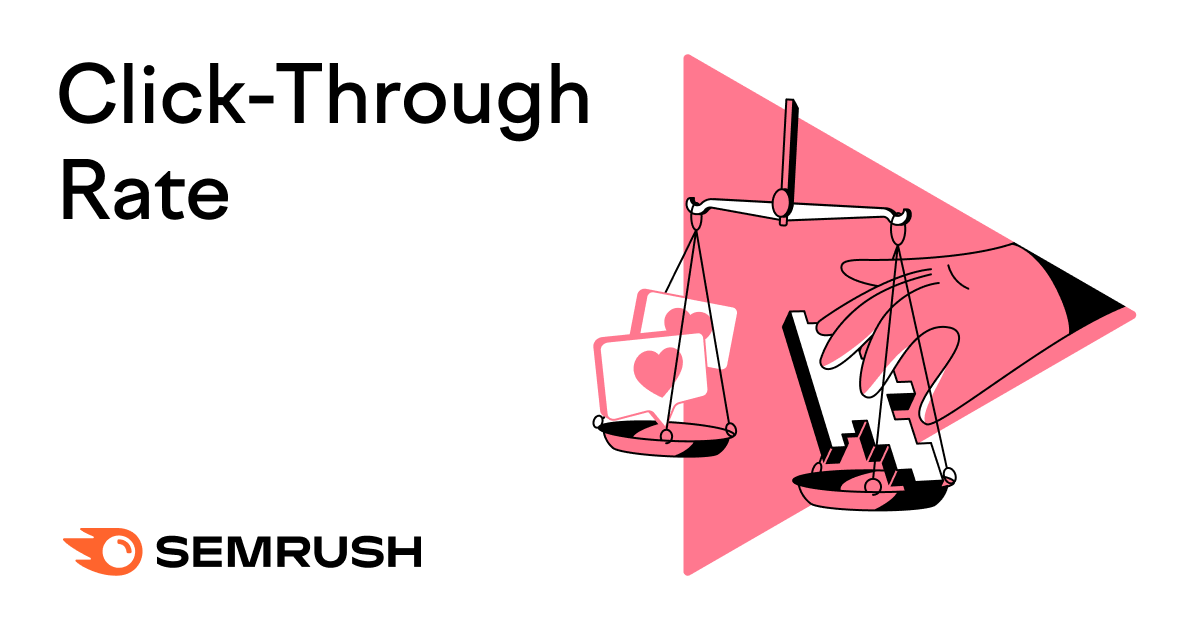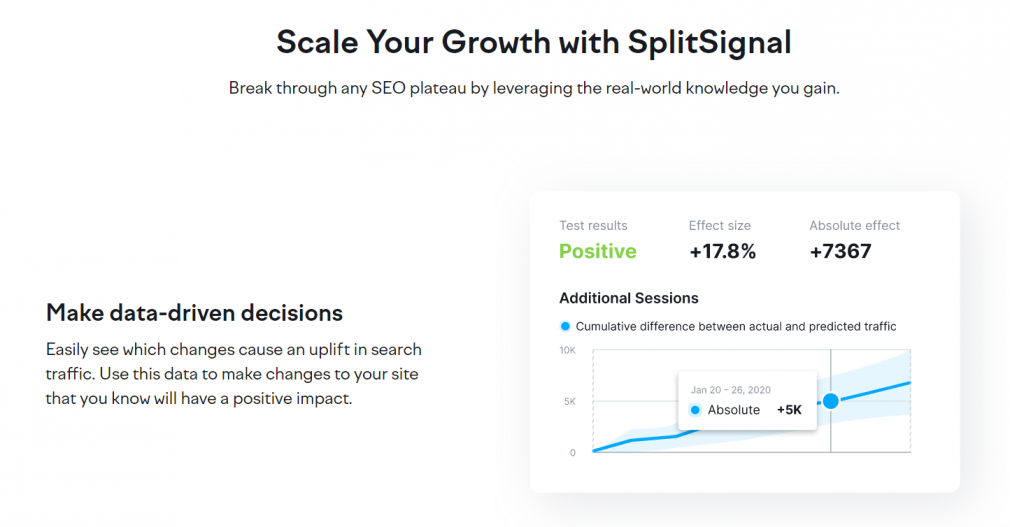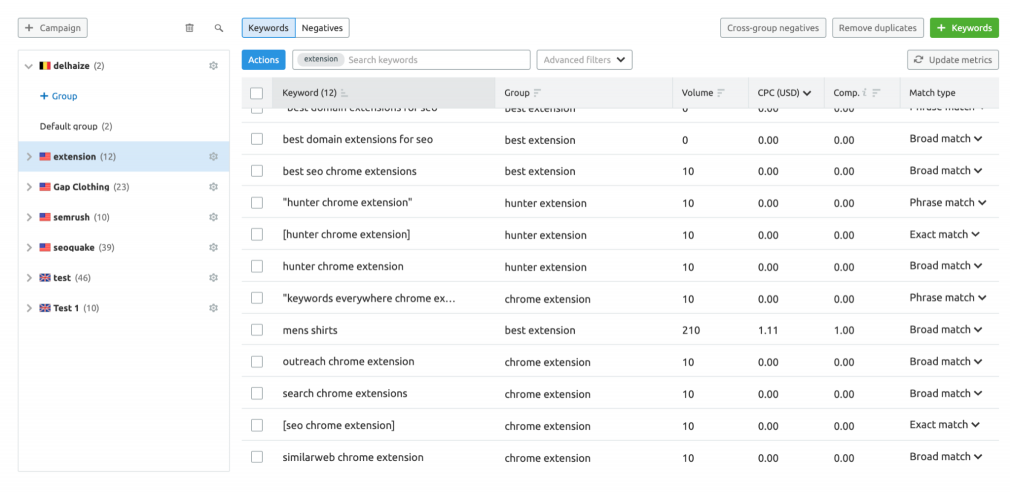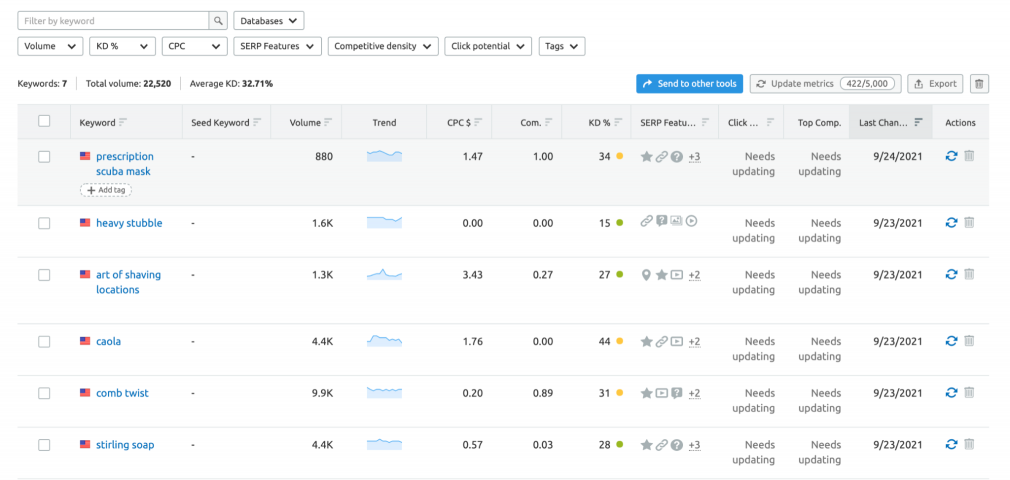What Is Click-Through Rate & Is There a ‘Good’ CTR to Aim For?

A click-through rate (CTR) is an online marketing metric used to track user engagement. Let’s review how this metric works and how you can use it to improve your marketing campaigns.
What Is a Click Through Rate (CTR)?
Your CTR measures how many people click on your campaign against how many times your campaign appears to users.
You can measure a CTR for most digital marketing channels, but you’ll commonly use this metric to track PPC, SEO, paid social, and email campaigns. CTR works best for these campaigns because their common goal is to direct a user to a specific webpage.
Say you’re running a PPC ad. You can easily track how many people see your ad, and how many users clicked on your ad. Here, the CTR metric is useful because you can gauge how well your ad is performing.
Your click-through rate doesn’t work in isolation. Other metrics like conversion rate and bounce rate are important to monitor too.
How Is CTR Calculated?
Although most marketing tools will calculate your click-through rate for you, it’s easy to do yourself. To determine your campaign’s CTR, divide the number of clicks your ad received by the number of impressions your ad generated. Multiply the resulting number by 100 to determine your CTR.
CTR = (Clicks / Impressions) x 100
Say you ran an ad that generated 10 clicks from 100 impressions. Using the formula above, you’d divide 10 (number of clicks) by 100 (number of impressions).
10 divided 100 equals 0.1. To find the CTR, we multiply 0.1 by 100, which returns 10. Your click-through rate would be 10%.
What Affects Click-Through Rate?
1. Relevancy
Make sure your content is relevant to the channel and landing page its related to. This means that any ad, email, or campaign should have the same message as its landing page. This is not only important for your CTRs but also your bounce rate and, ultimately, conversion.
2. Ad Rank
PPC CTR will also be affected by where your ad will show on a page (ad rank). Ad rank depends on your quality score, relevance, and the amount you’re willing to bid (CPC budget).
3. Device
Although it is largely out of our control, the device a user uses can affect your CTR across all channels. Typically, according to Web Marketing Pros, mobile CTRs are higher than on desktop. You can use this to your advantage by filtering your targeted audience by device if you’re on a tight budget. However, bear in mind that this is not always the case and by limiting your audience by device, you could be missing out on more clicks and customers.
What Is the Difference Between CTR for PPC and Organic Search?
You calculate your CTR the same way across all digital marketing channels. However, you’ll interpret your CTR results differently for each channel.
For example, organic CTR is the percentage of searchers that click on your page from the SERPs. Your clicks are largely influenced by what position your page holds on the SERP, so an organic CTR rate can tell you more about where the page ranks.
However, a PPC ad’s CTR depends on more factors like your ad’s message, which channel you use to deliver your ad, and who your ad targets.
What Is a Good CTR?
There is no set number that indicates a good CTR. An organic click-through rate in position 1 averages around 30% CTR. A PPC search ad hovers around 1.91% CTR and 0.35% for display, according to Wordstream. By contrast, an average email click-through rate stops around 2.5%.
However, there are so many factors that can influence the CTR of each marketing channel. Focus on using your click-through rate to determine which content your users consider relevant.
How to Improve Your CTR
If you are concerned about your CTRs, there are plenty of techniques you can try to improve them including:
1. Using Ad Extensions
For PPC campaigns, Google notes using ad extensions can lead to an increase in your CTR. Ad extensions can include reviews, locations, sitelinks, or call buttons. Ad extensions cover more space on the SERP, so you’ll catch more of the user’s eye.
Recommended Reading: A Guide to Sitelink Extensions
2. Use Symbols
Grab attention with symbols or emojis in the ad title or email subject line. Adding special characters to your content can help to draw user’s attention to your copy, according to Jonathan Long:
“Symbols really help an ad stand out (if they can be used correctly) when they are lined up against other similar ads selling the same product or service. In a sea of text, symbols really make an ad pop and stand out more.”
3. Use CTAs
Use CTAs to tell a user what you want them to do. Your CTA should use action verbs (“Buy,” “Call,” “Shop,” etc) and encourage a sense of urgency (“Buy Now.”) Link your CTA to a landing page that matches the ad copy’s language.
Recommended Reading: What Is a Call-to-Action?
4. Understand Your Audience
You’ll need to ensure that your ad gets displayed to the people that would be interested in your offer, so you can earn more clicks with fewer views. The more you know about your audience, the more specific you can get with your ad targeting.
You can also use the Organic Traffic Insights tool to view your most important data from your Google Analytics & Google Search Console data from one dashboard. Your organic traffic can tell you much about how your current audience finds and interacts with your website, which you can use to develop better ads.
5. A/B Test
Testing seems obvious, but it’s important to make sure you have considered all the factors that could result in bad CTRs. Try testing every step of the user journey, including the copy and landing pages you use.
To make A/B testing easier, try an A/B testing tool like SplitSignal. Designed specifically for SEO professionals, SplitSignals helps you quickly determine which optimizations increase organic growth.

6. Do Your Keyword Research
Before you create a PPC or paid social campaign, do your keyword research. Knowing the right keywords to target can save time and money otherwise lost to poor targeting.
For PPC campaigns, use the PPC Keyword Tool to organize your target keywords for Google Ads.
Plan out ad groups, automatically generate cross-group negative keywords for your campaigns, and export the plan to a file for future integration with Google Ads.
The tool can also provide keyword CPC and search volume on a local level for a specific city or region.

If you’re targeting a highly competitive keyword, you will find it harder to appear in a position that gets a good click-through rate. Similarly, if you target a keyword with minimal search volume, you will find it harder to drive enough clicks.
Use the Keyword Manager to determine the click potential and competitive density of potential keywords:

Recommended Reading: How to Use Semrush for Keyword Research
Key Takeaways
There are plenty of factors that can affect how likely someone is to click on your content or ad, and therefore your CTR.
Still, CTR is a useful metric; it just shouldn’t be used as the only performance metric. Getting your campaign in front of someone (impressions), getting them to click (CTR), keeping them on the page (bounce rate), and getting them to make a purchase (CVR), are four metrics you can check regularly to gauge your campaign’s performance.
Organize Keywords by Similarity
with the Keyword Manager Tool

Source link : Semrush.com



